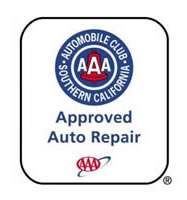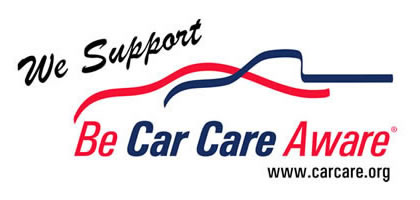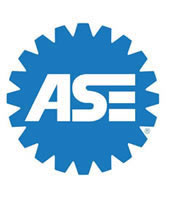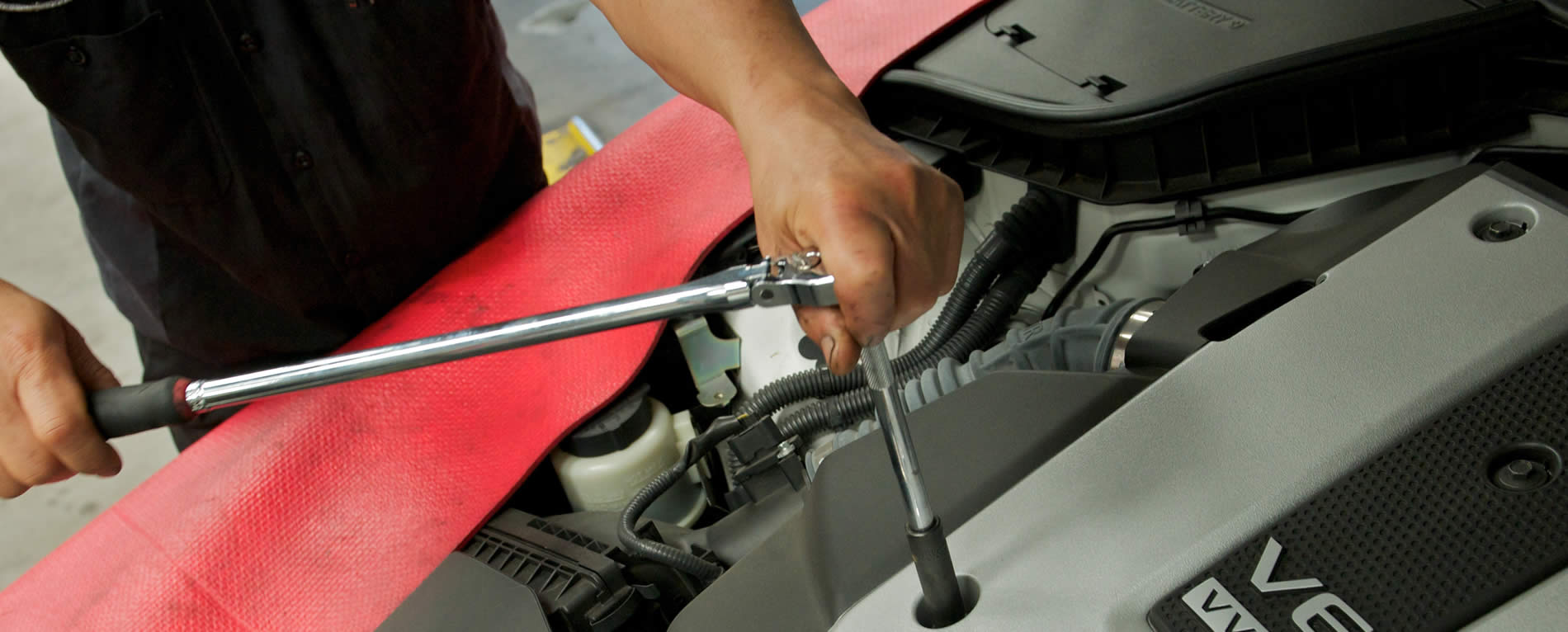Catt Auto Care, Huntington Beach ~ Service Library
Catt Auto Care Resources for Our Customers
Ron Catt Auto Care wants to put the tools into your hands that will allow you to make the most of your visit to our shop. As well as tips and tricks for automotive care.
Whether driving cross-town or cross-country, everybody wants to save money at the pump. Regardless of the make and model, your car’s estimated gas mileage is just that — an estimate. An important variable is how you fuel, drive, and maintain your car. The Federal Trade Commission (FTC), the nation’s consumer protection agency, offers bumper-to-bumper tips to help you get the most mileage out of your gas purchases.
At the Pump
Check your owner’s manual for the most effective octane level for your car. For most cars, the recommended gasoline is regular octane. In most cases, using a higher octane gas than the manufacturer recommends offers no benefit — and costs you at the pump. Some cars do require premium fuel, so before you fill up, check your owner’s manual to find out if the higher-priced gas is required or just recommended. Looking for more information on selecting the right octane level for your car? See The Low-Down on High Octane Gasoline.
Shop around. Specialized phone apps and websites can help you find the cheapest gas prices in your area. Also, many gas stations advertise regular weekly specials at their locations.
Charge it. Consider a credit card that offers cash back for gas purchases. Some offer two to five percent rebates, but it’s wise to read the fine print. Fees, charges, interest rates, and benefits can vary among credit card issuers.
On the Road
Start driving as soon as the engine is started. Modern engines don’t need much time to warm up. The engine actually warms up more quickly once the car is operating, and will stay warm after stopping.
Don’t speed. Gas mileage decreases rapidly at speeds above 60 miles per hour. According to Fueleconomy.gov, each 5 mph you drive over 60 mph is like paying an additional 24 cents per gallon for gas.
Avoid unnecessary idling. It wastes fuel, costs you money, and pollutes the air. Turn off the engine if you anticipate a wait.
Use overdrive gears and cruise control when appropriate. They improve fuel economy when you’re driving on the highway.
Minimize the need to brake by anticipating traffic conditions. Be alert for slow-downs and red lights. Anticipate bends and turns on familiar roads. Letting up on the gas often eliminates the need for braking.
Avoid jackrabbit starts and stops. Avoiding these can increase your mpg and prolong the life of your brakes.
Use the air conditioner only when you absolutely need it. Air conditioning dramatically reduces fuel economy. Most air conditioners have an “economy” setting that allows the circulation of unchilled air. Many also have a “maximum” or “recirculation” setting that reduces the amount of hot outside air that must be chilled. Both settings can reduce the air conditioning load — and save gas.
Combine errands. Several short trips taken from a cold start can use twice as much fuel as one trip covering the same distance when the engine is warm.
Remove excess weight from the trunk. An extra 100 pounds in the trunk can reduce a typical car’s fuel economy by up to two percent.
Avoid packing items on top of your car. A loaded roof rack or carrier creates wind resistance and can decrease fuel economy by five percent.
At the Garage
Keep your engine tuned. Tuning your engine according to your owner’s manual can increase gas mileage by an average of four percent.
Keep your tires properly inflated and aligned. It can increase gas mileage up to three percent, improve handling, and prolong the life of your tires. Check your owner’s manual or the door jamb for the proper level of inflation (not the tire itself, which shows the maximum tire inflation pressure); check the tire pressure when the tires are cold, because internal pressure increases when the car has been on the road for a while and the tires heat up.
Change your oil. According to the U.S. Department of Energy (DOE) and Environmental Protection Agency (EPA), you can improve your gas mileage by using the manufacturer’s recommended grade of motor oil. Motor oil that says “Energy Conserving” on the performance symbol of the American Petroleum Institute contains friction-reducing additives that can improve fuel economy.
When Shopping
Be skeptical about any gizmo that promises to improve your gas mileage. The EPA has tested supposed gas-saving devices — including “mixture enhancers” and fuel line magnets — and found that very few provided any fuel economy benefits. Those devices that did work provided only a slight improvement in gas mileage. In fact, some products may even damage your car’s engine or cause a substantial increase in exhaust emissions.
Whether you drive a tiny hybrid or a three-ton SUV, chances are you can squeeze a bit more distance out of each gallon of fuel — and at today’s gas prices, an improvement of just one or two miles per gallon (MPG) can really add up.
Keep your engine in tune.
Fixing a car that is out of tune or has failed an emissions test can boost gas mileage by about 4 percent. So be sure to give your car regular tune-ups. You’ll also want to watch out for worn spark plugs. A misfiring spark plug can reduce a car’s fuel efficiency by as much as 30 percent.
Replace air filters.
Keep a close eye on your engine’s air filter. When the engine air filter clogs with dirt, dust and bugs, it causes your engine to work harder and your car becomes less fuel-efficient. Replacing a clogged air filter could improve your gas mileage by as much as 10 percent and save you 15 cents a gallon. It’s a good idea to have your engine air filter checked at each oil change. The Car Care Council recommends changing your car’s air and oil filters every three months or 3,000 miles or as specified in your owner’s manual.
Use the right oil.
You can improve your car’s gas mileage by 1 percent to 2 percent by using the manufacturer’s recommended grade of motor oil. Opt for motor oil with the words “energy conserving” on the API performance label. This oil contains friction-reducing additives.
Don’t skimp on maintenance.
Be serious about auto care. Your car’s performance depends on it.
Always follow the manufacturer-recommended maintenance,” Moody says. “The car’s designed to run a certain way. If you neglect it, it won’t be as efficient.” Obey the car-care guidelines outlined in your owner’s manual.
Fill up with a lower-octane gasoline.
Buy the lowest grade or octane of gasoline that is appropriate for your car. Unless your car requires premium gasoline, filling up your car with high-octane fuel is a waste of money. That pricey premium fuel won’t boost your car’s fuel economy or performance in the least, so skip it.
If you’re not sure what grade of fuel works best for your car, open up your owner’s manual and take a look. As long as your engine doesn’t knock or ping when you fuel up with regular unleaded, you’re good to drive on this much cheaper gas. Passing on pricey premium gasoline could save you hundreds of dollars a year.
Don’t top off.
Don’t bother topping off when filling your car’s gas tank. Any additional gas is just going to slop around or seep out. Why waste your money paying for gas your car won’t use? Stop pumping at the first indication that your tank is full when the automatic nozzle clicks off.
Tighten up that gas cap.
Gas will evaporate from your car’s gas tank if it has an escape. Loose, missing or damaged gas caps cause 147 million gallons of gas to evaporate each year, according to the Car Care Council. So be sure to tighten up that gas cap each time you fuel up your car.
Go for the shade.
The hot summer sun that makes the inside of your car feel like a sauna also zaps fuel from your gas tank. “If you let your car bake in the sun there’s going to be a greater amount of evaporative emissions that take place than if you park in the shade,” says Jim Kliesch, research associate at the American Council for an Energy-Efficient Economy and vehicle analyst for GreenerCars.com. So park your car in the shade of a building or tree whenever possible. And buy a good windshield shade. A windshield shade blocks sunlight and helps to keep heat out of the inside of your car.
Use your garage for your car.
Got a garage? Clear it out and make room for your car. Parking in your garage will help your car stay warm in winter and cool in summer, and you won’t have to depend as much on your gas-guzzling air-conditioning or defroster when you drive.
Pump up your tires.
Don’t get caught driving on underinflated tires. Underinflated tires wear down more quickly and they also lower your car’s gas mileage.
” Tires that have low pressure offer more resistance so the engine is going to work harder to keep the car at 60,” says Brian Moody, road test editor at Edmunds.com.
Your car’s gas mileage may plummet by as much as 15 percent. Driving on underinflated tires may also reduce the life of your tires by 15 percent or more.
Check your tire pressure once a month.
Buy a digital gauge and keep it in your glove box. Compare the pressure in your tires with the recommended pressure listed in your owner’s manual and on the placard in your car door. Then inflate your tires as needed. Be sure to check tire pressure when your tires are cold. A good time is early in the morning after your car’s been idle overnight.
Have you been in an instance where you have had a vehicle trouble and you needed anyone to fix it? Almost all people had at one time. It can be very frustrating and have your vehicle fixed especially when you do not have any idea where to go and who will fix it. This is exactly the importance of having a trustworthy mechanic near your place when you first bought your car. Here are some tips on choosing a car mechanic should you need his services.
Tip #1: Get Recommendations:
All the experts agree with this idea: always get recommendations when you are about to choose the best car mechanic. Mechanics operate in the service industry, and they are not just there to service your vehicle, but additionally to service you too, meaning you need to make certain the car mechanic does not only understand how to fix a car, but he also understands how to treat his clients. The easiest method to know this is to buy recommendations prior to your visit to the mechanics service centre. Request family members and friends, as well as co-employees concerning the mechanics that they have worked with. You will likely find great opinions from them.
Tip #2: Take A Look At Their Shop:
Garage centers are not similar. Lot of people thinks that all garages are covered in filth and therefore are much disorganized. That is not the situation. When you choose a car mechanic, make certain that you take time to look at their garage. When the garage is totally filthy and it is disorganized, you might want to search for another mechanic. While a little of grime and grease is anticipated inside a garage, the garage ought to be organized to ensure that the car mechanic will find exactly what he needs. The place ought to be neat and comfortable for waiting while your vehicle gets repaired.
Tip #3: Pay Attention To Their Prices:
Another factor that is vital to look at when you are selecting a vehicle mechanic is the prices. When you are searching for a car mechanic you do not always want to obtain the least expensive mechanic. Sometimes inexpensive kind of mechanic does not possess the experience or training that is essential to get the vehicle in great shape. But neither would you like to discover the most costly. Rather, search for one which has fair prices. A business who hides their prices is not one that you ought to use. It is also advisable to compare their prices with other service centers.
Should you search for a car mechanic, make sure that the mechanic is not just capable of fixing your vehicle but also is capable of examining what needs to be fixed. Get one who knows their profession and is offering their services at reasonable price.
Conclusion: Make certain the mechanic includes a professional certification from a testing organization. Car service centers only hire licensed mechanics as these types of mechanics demonstrate understanding and professionalism relating to their jobs. Therefore, they are more reliable than those who are not.
These are generic service recommendations based solely on time or mileage not on visual appearance or measurement. Their purpose is to extend the life of your vehicle and help prevent breakdown through a schedule of highly beneficial preventive maintenance procedures.
| Oil, Lube, Filter | 3,000 to 5,000 miles* |
| Tire Rotation | 5,000 to 7,500 Miles depending on tire style* |
| PCV Valve | Yearly, replace and service PCV system |
| Whole Car Diagnosis | Yearly and before purchase or sale |
| Fuel Filter | Yearly or as needed |
| Battery Service | Yearly or as needed |
| Air Conditioning | Check every spring or as needed |
| Radiator Coolant | Every two years, flush* |
| Brake System Flush | Every year |
| Clutch System Flush | Every year |
| Radiator Cap | Replace every two years |
| Engine Oil Flush | 2 Years or 30,000 Miles |
| Automatic Transmission Flush | 2 Years or 24,000 miles* |
| Power Steering Flush | 2 Years or 24,000 miles |
| EGR System Service | 2 Years or 24,000 miles* |
| 4×4 Transfer Case | 15,000 to 50,000 miles* |
| Caron Cleaning | 2 Years or 30,000 miles or as needed* |
| Throttle-Body Service | 2 Years or 30,000 miles or as needed* |
| Radiator and Heater Hoses | 4 Years or 60,000 miles |
| Drive Belts | 4 Years or 60,000 miles |
| Timing Belt | 4 Years or 60,000 miles* |
| Differential Fluid | 15,000 to 50,000 miles* |
| Manual Transmission Service | 15,000 to 50,000 miles* |
| Valves | Adjust per owner’s manual |
| Scan for Computer Codes | When amber “CHECK ENGINE” Light is on |
| Oxygen Senson | Per owner’s manual or as needed |
*Your vehicle’s requirements may differ depending on driving habits and/or owner’s manual recommendations. Check your owner’s manual and with your service advisor for specifications.
Ron Catt Auto Repair Shop In Huntington Beach, CA Services:
Cadillac | Buick | Chevy | GMC | Ford | Lincoln | Nissan | Infiniti | Toyota | Lexus | Kia | Hyundai | Acura | Honda | BMW | Porsche | VW | Volvo | Jeep | Subaru
Orange County Areas We Serve:
Huntington Beach, Seal Beach, Costa Mesa, Newport Beach, Westminster and Fountain Valley




